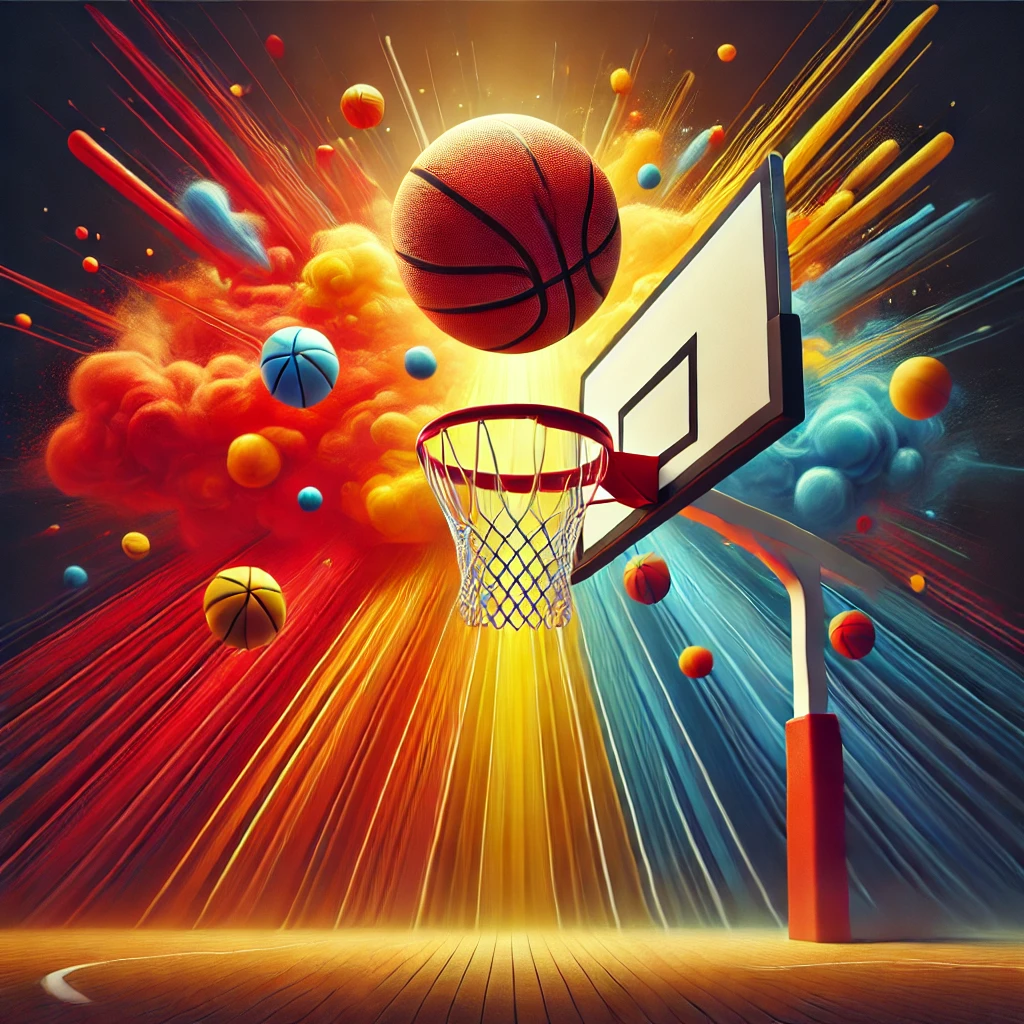Basketball in the Philippines is more than just a sport; it’s a cultural phenomenon that has captured the hearts and minds of millions across the archipelago. From bustling city streets to remote rural villages, the familiar sound of a bouncing ball and the sight of makeshift hoops attached to trees or buildings are ubiquitous. This enduring love affair between Filipinos and basketball has deep historical roots, societal influences, and a profound impact on the nation’s identity. In this comprehensive exploration, we will delve into the origins, evolution, and current state of basketball in the Philippines, examining its role as a national pastime and its significance in Filipino culture.
Historical Roots
The American Influence
The introduction of basketball to the Philippines can be traced back to the early 20th century during the American colonial period. American teachers, known as Thomasites, brought the sport to the islands as part of their educational curriculum. The first recorded basketball game in the Philippines took place in 1910, marking the beginning of a long and passionate relationship between the Filipino people and the sport.
Early Adoption and Growth
Basketball quickly gained popularity among Filipinos due to several factors. The sport’s relatively simple rules, minimal equipment requirements, and the ability to play in small spaces made it accessible to a wide range of people. Additionally, the Philippine climate, characterized by frequent rainfall, made indoor sports like basketball more appealing than outdoor alternatives.
As the sport grew in popularity, it became an integral part of physical education programs in schools across the country. This early exposure ensured that successive generations of Filipinos would grow up with basketball as a fundamental part of their athletic and cultural experience.
Basketball in Filipino Society
A Sport for All
One of the most remarkable aspects of basketball in the Philippines is its universal appeal. The sport transcends age, gender, and socioeconomic boundaries, uniting people from all walks of life. In urban areas, it’s common to see impromptu games taking place on neighborhood courts, while in rural regions, basketball hoops can be found attached to trees or mounted on bamboo poles.
Community Building and Social Cohesion
Basketball plays a significant role in fostering community spirit and social cohesion in the Philippines. Local tournaments, known as “ligas,” are a common feature in many barangays (villages) and municipalities. These events bring together residents, strengthen community ties, and provide entertainment for spectators of all ages.
Economic Impact
The popularity of basketball has also had a substantial economic impact on the Philippines. The sport has created numerous job opportunities, from professional players and coaches to equipment manufacturers and retailers. Additionally, the basketball industry contributes significantly to the country’s sports tourism sector, attracting international events and fostering local economic growth.
Professional Basketball in the Philippines
The Philippine Basketball Association (PBA)
Founded in 1975, the Philippine Basketball Association (PBA) is the first professional basketball league in Asia and the second oldest in the world after the NBA. The PBA has played a crucial role in elevating the sport’s profile in the country and providing a platform for local talent to showcase their skills.
PBA Structure and Format
The PBA operates with a unique format, featuring three conferences per season:
- Philippine Cup (All-Filipino Conference)
- Commissioner’s Cup
- Governors’ Cup
Each conference crowns its own champion, adding to the excitement and competitiveness of the league.
Notable PBA Teams and Players
Several teams and players have become household names in the Philippines due to their success and popularity in the PBA. Here’s a table showcasing some of the most successful PBA teams:
| Team Name | Championships | Notable Players |
|---|---|---|
| San Miguel Beermen | 27 | Ramon Fernandez, June Mar Fajardo |
| Barangay Ginebra San Miguel | 14 | Robert Jaworski, Mark Caguioa |
| Magnolia Hotshots | 14 | James Yap, Marc Pingris |
| Talk ‘N Text Tropang Giga | 8 | Jimmy Alapag, Jayson Castro |
| Alaska Aces (defunct) | 14 | Johnny Abarrientos, Jojo Lastimosa |
International Competition and National Pride
The Philippine National Basketball Team
The Philippine national basketball team, also known as Gilas Pilipinas, represents the country in international competitions. The team has a rich history of success in regional tournaments and has consistently been one of the strongest basketball nations in Asia.
Notable Achievements
Here are some of the most significant achievements of the Philippine national basketball team:
- Gold medal at the 1960 and 1963 FIBA Asia Championship
- Bronze medal at the 1954 FIBA World Championship
- Multiple gold medals at the Southeast Asian Games
- Qualification for the 2014 and 2019 FIBA Basketball World Cup
The Dream of Olympic Glory
Despite its regional success, the Philippines has yet to win an Olympic medal in basketball. The nation’s passion for the sport fuels an ongoing quest for Olympic glory, with each international tournament seen as a stepping stone towards achieving this goal.
Basketball Infrastructure and Development
Grassroots Programs
The continued success of basketball in the Philippines relies heavily on grassroots development programs. Various organizations, including the Samahang Basketbol ng Pilipinas (SBP) and local government units, implement youth basketball programs to nurture talent from an early age.
School-based Competitions
Basketball is an integral part of the Philippine educational system, with competitions at various levels:
- Elementary school leagues
- High school tournaments (e.g., UAAP Juniors, NCAA Juniors)
- Collegiate leagues (e.g., UAAP, NCAA)
These school-based competitions serve as a crucial pipeline for developing talent and preparing players for professional careers.
Training Facilities and Academies
In recent years, there has been an increase in the number of specialized basketball training facilities and academies across the Philippines. These institutions provide aspiring players with access to advanced coaching, strength and conditioning programs, and exposure to international playing styles.
The Cultural Impact of Basketball
Basketball as a Social Equalizer
In the Philippines, basketball serves as a great equalizer, bringing together people from different social backgrounds. Whether played on expensive indoor courts or makeshift street hoops, the sport provides a common ground for Filipinos to interact, compete, and bond.
Influence on Popular Culture
Basketball’s influence extends far beyond the court, permeating various aspects of Filipino popular culture:
- Fashion: Basketball jerseys and sneakers are popular streetwear items.
- Music: Many Filipino musicians have created songs celebrating basketball or referencing the sport.
- Language: Basketball terms have been incorporated into everyday Filipino slang.
- Advertising: Basketball players and themes are frequently used in marketing campaigns.
Basketball and National Identity
The Philippines’ passion for basketball has become an integral part of the national identity. Success in international competitions is a source of immense pride, while setbacks are felt deeply across the nation. This emotional investment in the sport reflects its significance in Filipino culture.
Challenges and Future Prospects
Height Disadvantage
One of the most significant challenges facing Philippine basketball on the international stage is the height disadvantage. The average height of Filipino males is considerably lower than that of players from other basketball powerhouses. To address this, there has been an increased focus on developing skills, speed, and agility to compensate for the lack of height.
Talent Drain
As Filipino players gain recognition internationally, there is a growing trend of talented individuals being recruited by foreign leagues. While this provides opportunities for players, it can potentially weaken the local leagues and national team.
Expanding the Talent Pool
Efforts are being made to expand the basketball talent pool in the Philippines:
- Improved scouting systems to identify potential in rural areas
- Increased investment in women’s basketball
- Development of alternative playing styles suited to Filipino physiques
Technological Advancements
The integration of technology in basketball training and development presents new opportunities:
- Virtual reality training systems
- Advanced analytics for player performance
- Online platforms for talent discovery and development
The Role of Media and Fan Engagement
Television and Streaming
Basketball games, particularly PBA matches and international tournaments, enjoy high viewership ratings in the Philippines. The advent of streaming platforms has further increased accessibility, allowing fans to watch games on various devices.
Social Media Impact
Social media platforms have revolutionized how Filipino basketball fans engage with the sport:
- Real-time game updates and highlights
- Direct interaction between fans and players
- Fan-generated content and discussions
Basketball-focused Media
The Philippines has a thriving ecosystem of basketball-focused media outlets:
- Dedicated sports channels
- Basketball-centric websites and blogs
- Podcasts and YouTube channels discussing all aspects of the sport
Women’s Basketball in the Philippines
Growing Popularity
While men’s basketball has traditionally dominated the spotlight, women’s basketball in the Philippines is gaining traction. The establishment of the Women’s National Basketball League (WNBL) in 2020 marked a significant milestone in promoting gender equality in the sport.
Challenges and Opportunities
Women’s basketball in the Philippines faces several challenges:
- Limited funding compared to men’s leagues
- Less media coverage and public attention
- Fewer professional opportunities
However, there are also promising developments:
- Increased grassroots programs for young girls
- Growing success of the women’s national team in international competitions
- Emerging role models inspiring the next generation of female players
Conclusion
Basketball in the Philippines is more than just a sport; it’s a national obsession that permeates every aspect of Filipino society. From its humble beginnings during the American colonial period to its current status as a cultural icon, basketball has played a pivotal role in shaping the Filipino identity.
The sport’s accessibility, coupled with the passion and talent of Filipino players, has created a unique basketball culture that continues to evolve and inspire. Despite challenges such as the height disadvantage on the international stage, the Philippines remains committed to basketball excellence, constantly adapting and innovating to compete at the highest levels.
As the nation looks to the future, basketball will undoubtedly continue to be a source of unity, pride, and inspiration for millions of Filipinos. Whether played on world-class arenas or street corners, basketball in the Philippines is truly a national pastime that shows no signs of waning in popularity or cultural significance.
Disclaimer: While every effort has been made to ensure the accuracy of the information presented in this blog post, please note that statistics and data may be subject to change. We encourage readers to verify current information from official sources. If you notice any inaccuracies, please report them so we can promptly make corrections.




